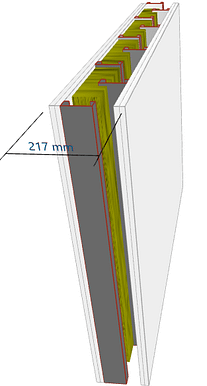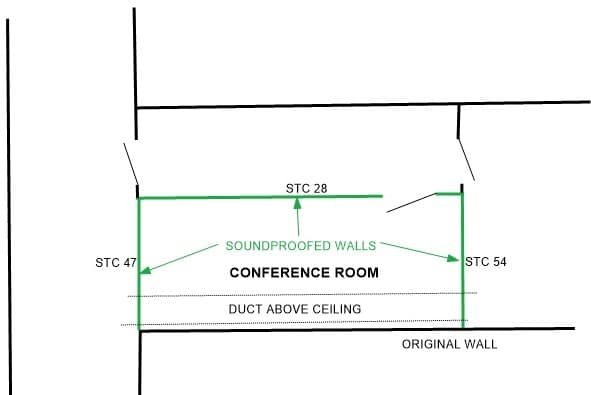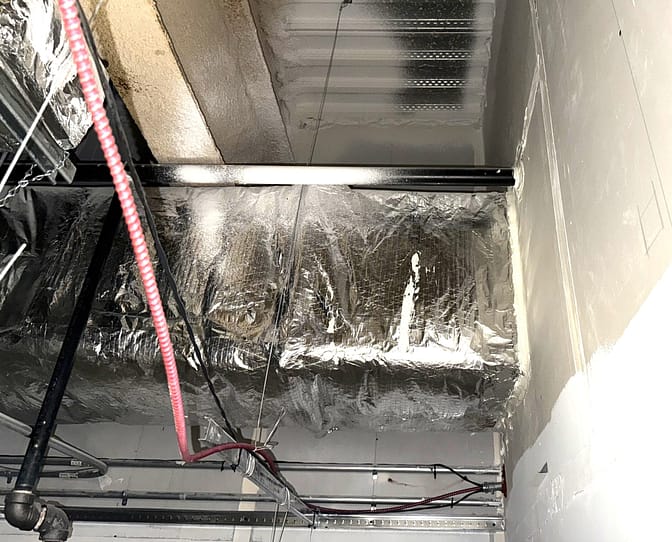A contractor contacted me to test the sound transmission loss (STC value) at his newly built high-security conference room and confirm that the room's soundproofing meets the client’s requirements for STC 55. The test failed.
More...
Room soundproofing test results
I have tested three walls; one was original and not affected by the construction. The layout of the space is in Fig. 2.
Figure 2 - Floor plan of the tested conference room
The test results were STC 54, STC 47, and STC 28, all failing the project requirements of STC 55. The contractor was distraught; he thought he had built it for STC 68.
Soundproofing defects.
The contractor was unaware of the flanking noise paths and did not implement the necessary measures to control them. This is a common oversight in soundproofing projects, where attention is often focused solely on direct transmission through walls or ceilings, while indirect (flanking) paths — such as through structure, ductwork, or junctions — are overlooked. In this case, the absence of acoustic consultation prior to construction contributed to the issue.
Most contractors are not trained in building acoustics, and effective noise control typically requires an acoustical engineer during the design and construction phases to identify and mitigate transmission paths.
The defect causing STC 28.
The wall (see Fig. 2) has a door in it. Most standard doors, when perfectly sealed, have STC 30 to 35. No door is perfectly sealed. The door is the weakest acoustic part of the wall and dominates the test results, causing STC 28.
The defects causing STC 47 and 54 in room soundproofing.
The conference room has a large rectangular duct in the plenum above its ceiling (dashed lines in Fig. 2). The duct penetrates both side walls, causing a large opening (Fig. 3). A steel rectangular duct has a low resistance to break-in noise, which exists on the other side of the wall as break-out noise. Additionally, the thermal insulation around the duct prevents the drywall from sealing correctly against the duct, further aggravating the problem.
Figure 3 - Duct through the conference room side wall causing a defect in room soundproofing.
Fixing the problem in the room soundproofing.
It is not possible to achieve STC 55 for the door. The only solution is to replace it with a special acoustic door. This is a problem when the customer wishes all doors to appear the same.
Enclosing the ducts in the plenum above the conference room in a drywall duct chase can mitigate the noise path through its openings in the walls.
Correcting soundproofing deficiencies after construction is typically far more costly and complex than designing the system properly from the outset. Once finishes and structures are in place, identifying and treating hidden flanking paths or inadequate assemblies often requires partial demolition and reconstruction.
Engaging an acoustical engineer during the design stage ensures that noise control measures are correctly specified and integrated, preventing costly remedial work later and achieving a more reliable acoustic outcome.



